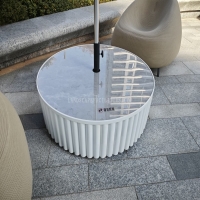Welcome to the website for landscape facilities products and knowledge.
How does the design address the risk of rust in humid environments?
In humid environments, rust poses a significant threat to metal structures and components. To address this, modern design incorporates several strategies to ensure longevity and durability.
1. Material Selection: Stainless steel and aluminum alloys are commonly used due to their inherent corrosion resistance. These materials form a passive oxide layer that protects against moisture and oxidation.
2. Protective Coatings: Applying coatings like powder coating, galvanization, or specialized paints creates a barrier between the metal and moisture. These coatings are often enhanced with rust-inhibiting compounds for added protection.
3. Design for Drainage: Proper design includes features like sloped surfaces or drainage holes to prevent water accumulation, which can accelerate rust formation.
4. Sealed Joints and Gaskets: Using high-quality seals and gaskets in assemblies prevents moisture ingress, particularly in critical areas like electrical enclosures or mechanical joints.
5. Regular Maintenance: Designs that facilitate easy inspection and maintenance allow for timely detection and treatment of early-stage corrosion.
By integrating these principles, engineers and designers effectively mitigate rust risks, ensuring reliability even in the most challenging humid conditions.
Related search:

Recommendation
Round metal tube border design table with tempered glass or granite countertop on the top.